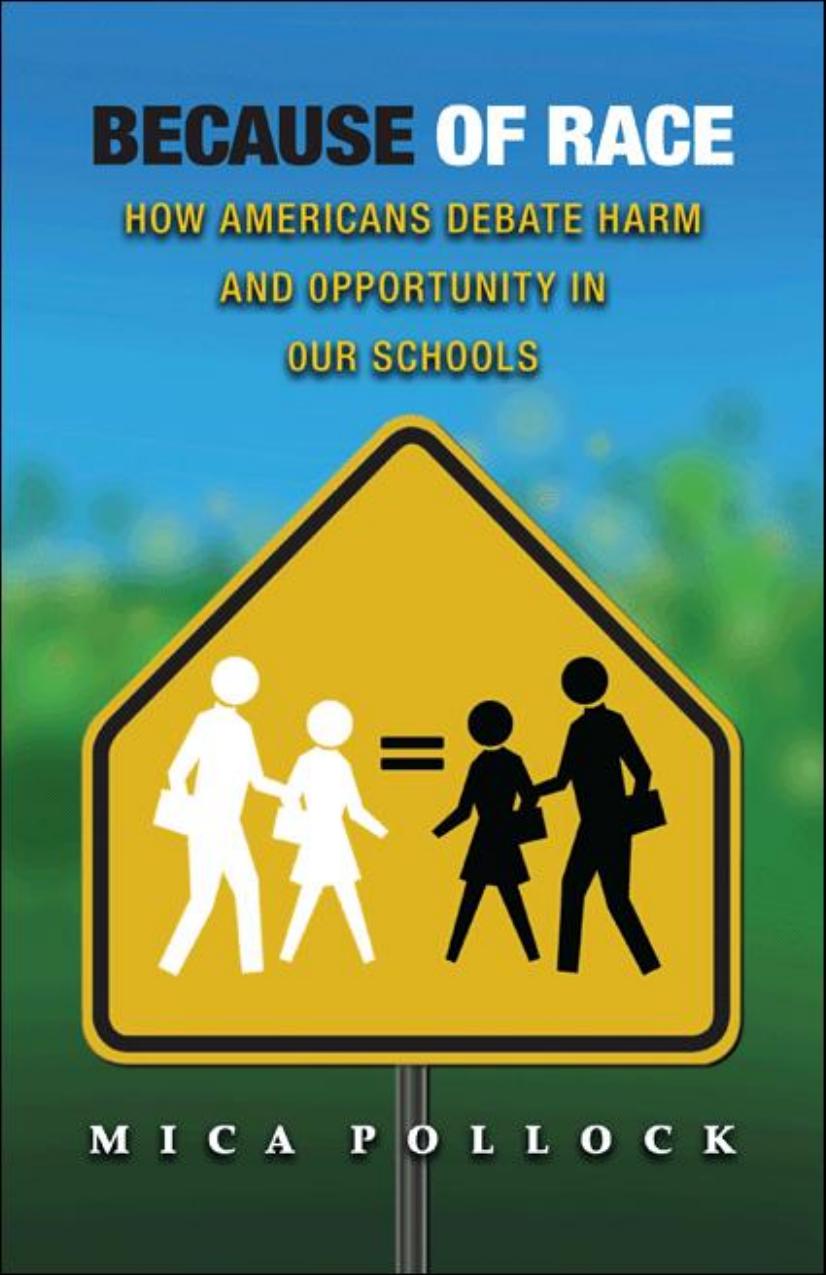Because of Race: How Americans Debate Harm and Opportunity in Our Schools by Mica Pollock

Author:Mica Pollock [Pollock, Mica]
Language: eng
Format: azw3, pdf
Publisher: Princeton University Press
Published: 2010-10-24T16:00:00+00:00
DISMISSING EFFORTS FOR EVERYDAY JUSTICE AS TOO “SMALL”
While working at OCR, I often critiqued the scale of my own efforts, because I was asked most often to investigate the treatment of individual children. OCR circa 2000 more often investigated the treatment of individual students, particularly those with disabilities, than the treatment of large groups of children of any kind. Observers in the mid-1990s had described this strategy bluntly as “diminished” and “limited” in “scope.”13 Indeed, the focus on individuals often felt like a diminished framing of harm. I responded in my notes one day to such a complaint, about a high school student whose parents had asked OCR to help secure some accommodations on reading assignments for his learning disability: “Ted is in the next cube fighting for Johnny’s right to use Cliff Notes. Why is the civil rights establishment spending resources on this?” Was it harm worth worrying about at the federal level if one white male student was denied a special list of assignments every Friday on multiple colors of paper? Or if another was denied a laptop to use during timed writing tests? It certainly seemed to me like a misdirection of civil rights efforts.
But my critique neglected a key reality: disability law recognizes that analyzing such everyday experiences for individuals might well be core to ensuring their civil right to access the common curriculum. If children are appropriately diagnosed and served, “disabled” students’ IEPs, the cornerstone of their rights, hold educators accountable for providing the specific academic assistance professionals have deemed necessary to enable each student to compete on as level a playing field as possible.14 As I discuss in more depth later on, this framing of equal opportunity, which requires detailed attention to the quality of opportunities provided in daily life, is a core model for everyday justice efforts. In the race arena, however, educators receiving detailed complaints of everyday harms to children of color—either as individuals or in large groups—often dismissed such everyday harms as too “small” to actually add up to unequal opportunity.
Some of my most thought-provoking moments at OCR came when recipients of complaints acknowledged that some children of color had been wronged by school or district practices, but then argued defiantly that these harms were too minimal to be remedied. One particularly memorable complaint was brought by a teacher in the urban King district who sought compensatory education for a handful of Latino students with learning disabilities who were left unmonitored for months by any consistent teacher. A sympathetic teacher, hearing of her colleague’s quest, responded that finding a credentialed teacher or compensating the students would not solve the larger problem. At an underresourced school full of low-income Latinos, she explained, “abled” Latino kids lacked many of the same opportunities. The district’s less sympathetic disability coordinator, Christie McCormack, argued that the district as a whole lacked credentialed teachers, so providing remedial education to this handful of students would accomplish nothing and was unnecessary. Both focused on the overwhelming scale of the
Download
Because of Race: How Americans Debate Harm and Opportunity in Our Schools by Mica Pollock.pdf
This site does not store any files on its server. We only index and link to content provided by other sites. Please contact the content providers to delete copyright contents if any and email us, we'll remove relevant links or contents immediately.
| Administration | Assessment |
| Educational Psychology | Experimental Methods |
| History | Language Experience Approach |
| Philosophy & Social Aspects | Reform & Policy |
| Research |
The Art of Coaching Workbook by Elena Aguilar(48059)
Trainspotting by Irvine Welsh(20052)
Twilight of the Idols With the Antichrist and Ecce Homo by Friedrich Nietzsche(17705)
Fangirl by Rainbow Rowell(7832)
Periodization Training for Sports by Tudor Bompa(7327)
Change Your Questions, Change Your Life by Marilee Adams(6639)
This Is How You Lose Her by Junot Diaz(5768)
Grit by Angela Duckworth(4735)
Red Sparrow by Jason Matthews(4663)
Asking the Right Questions: A Guide to Critical Thinking by M. Neil Browne & Stuart M. Keeley(4573)
Paper Towns by Green John(4169)
Room 212 by Kate Stewart(4102)
Ken Follett - World without end by Ken Follett(3972)
The Sports Rules Book by Human Kinetics(3586)
Housekeeping by Marilynne Robinson(3401)
The Motorcycle Diaries by Ernesto Che Guevara(3332)
Introduction to Kinesiology by Shirl J. Hoffman(3299)
Exercise Technique Manual for Resistance Training by National Strength & Conditioning Association(3291)
Double Down (Diary of a Wimpy Kid Book 11) by Jeff Kinney(3272)
